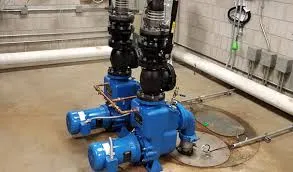Indonesian
- Afrikaans
- Albanian
- Amharic
- Arabic
- Armenian
- Azerbaijani
- Basque
- Belarusian
- Bengali
- Bosnian
- Bulgarian
- Catalan
- Cebuano
- Corsican
- Croatian
- Czech
- Danish
- Dutch
- English
- Esperanto
- Estonian
- Finnish
- French
- Frisian
- Galician
- Georgian
- German
- Greek
- Gujarati
- Haitian Creole
- hausa
- hawaiian
- Hebrew
- Hindi
- Miao
- Hungarian
- Icelandic
- igbo
- Indonesian
- irish
- Italian
- Japanese
- Javanese
- Kannada
- kazakh
- Khmer
- Rwandese
- Korean
- Kurdish
- Kyrgyz
- Lao
- Latin
- Latvian
- Lithuanian
- Luxembourgish
- Macedonian
- Malgashi
- Malay
- Malayalam
- Maltese
- Maori
- Marathi
- Mongolian
- Myanmar
- Nepali
- Norwegian
- Norwegian
- Occitan
- Pashto
- Persian
- Polish
- Portuguese
- Punjabi
- Romanian
- Russian
- Samoan
- Scottish Gaelic
- Serbian
- Sesotho
- Shona
- Sindhi
- Sinhala
- Slovak
- Slovenian
- Somali
- Spanish
- Sundanese
- Swahili
- Swedish
- Tagalog
- Tajik
- Tamil
- Tatar
- Telugu
- Thai
- Turkish
- Turkmen
- Ukrainian
- Urdu
- Uighur
- Uzbek
- Vietnamese
- Welsh
- Bantu
- Yiddish
- Yoruba
- Zulu
Telephone: +86 13120555503
Email: frank@cypump.com
Okt . 21, 2024 15:04 Back to list
Enhancing Efficiency in Flue Gas Desulfurization Pump Systems for Improved Environmental Compliance
Understanding Flue Gas Desulfurization Pumps A Critical Component in Emission Control
Flue Gas Desulfurization (FGD) is an essential process in many industrial applications, particularly in power generation, to reduce sulfur dioxide (SO2) emissions produced from the combustion of fossil fuels. As regulations surrounding air quality continue to tighten globally, the importance of effective FGD systems has never been more pronounced. A key element of these systems is the FGD pump, which plays a crucial role in ensuring the successful operation of desulfurization processes.
The Role of FGD Pumps
FGD pumps are specifically designed to handle the highly abrasive and corrosive slurries generated during the desulfurization process. These pumps transport limestone or other reactants mixed with water to scrubbers, where SO2 is absorbed and neutralized. The choice of pumps is critical, as they must withstand harsh environmental conditions and provide reliable, continuous operation.
There are several types of FGD pumps, including centrifugal pumps, positive displacement pumps, and vortex pumps. Each has its advantages and is chosen based on the specific requirements of the FGD system. Centrifugal pumps, for instance, are commonly used due to their efficiency and capability to handle various flow rates. Positive displacement pumps, on the other hand, excel in delivering consistent flow under varying pressures, making them suitable for high-viscosity slurries.
Considerations in Selecting FGD Pumps
When selecting an FGD pump, several factors must be taken into account
1. Material Compatibility Due to the corrosive nature of the slurries, the pump’s construction materials must resist corrosion and erosion. Common materials used include stainless steel, rubber-lined metal, and ceramic coatings.
flue gas desulfurization pump

2. Flow Rate and Pressure The pump must be capable of handling the required flow rates and pressures based on the size and design of the FGD system. Understanding the hydraulic requirements is essential to ensure optimal performance.
3. Maintenance and Reliability Given the critical role of FGD in meeting regulatory compliance, pumps must be easy to maintain and repair. Reliable pumps minimize downtime and operational costs, thus contributing to the overall efficiency of the desulfurization system.
4. Energy Efficiency As energy costs rise, selecting pumps that offer higher efficiencies can lead to significant savings over time. Energy-efficient designs not only lower operational costs but also reduce the carbon footprint of the facility.
Innovations in FGD Pump Technology
The advancement of technology has brought significant improvements to FGD pump design and functionality. Innovations such as smart pumps equipped with sensors and IoT connectivity allow for real-time monitoring of pump performance, leading to predictive maintenance and improved operational efficiency. These smart systems can identify issues before they lead to pump failures, minimizing unexpected downtime and repair costs.
Furthermore, advancements in materials science are producing pumps that can resist even more severe conditions, thereby enhancing their durability and lifespan. Innovations such as composite materials and advanced coatings are increasing resistance to abrasion and corrosion, leading to lower maintenance needs.
Conclusion
As the demand for cleaner air intensifies, flue gas desulfurization systems and their components, particularly FGD pumps, will continue to be integral in industrial emissions management. Selecting the right pump is crucial for ensuring the efficiency and reliability of FGD processes. With ongoing innovations, the future of FGD pump technology looks promising, enabling industries to meet environmental regulations while minimizing their ecological impact. In an era where sustainability is paramount, investing in high-quality, efficient FGD pumps is not just a regulatory necessity but also a step towards a cleaner, greener future.
-
High-Efficiency Submersible Effluent Pump for Sewage & Wastewater Solutions
NewsJul.08,2025
-
High Quality CH Warman Slurry Pump Factory - Leading Horizontal Slurry Pump Supplier
NewsJul.08,2025
-
Hot Sale Chemical Circulating Pump – Efficient & Durable Slurry Circulating Pump Solutions
NewsJul.08,2025
-
High-Efficiency Submersible Dredge Pump for Sand & Gravel Durable Dredge Slurry Pumps Solutions
NewsJul.07,2025
-
Wholesale Slurry Pump Impeller Supplier – High-Quality & Efficient Pump Parts for Enhanced Performance
NewsJul.07,2025
-
High-Efficiency Water Submersible Pumps Reliable Water Pump for Potable Water Supply
NewsJul.06,2025










